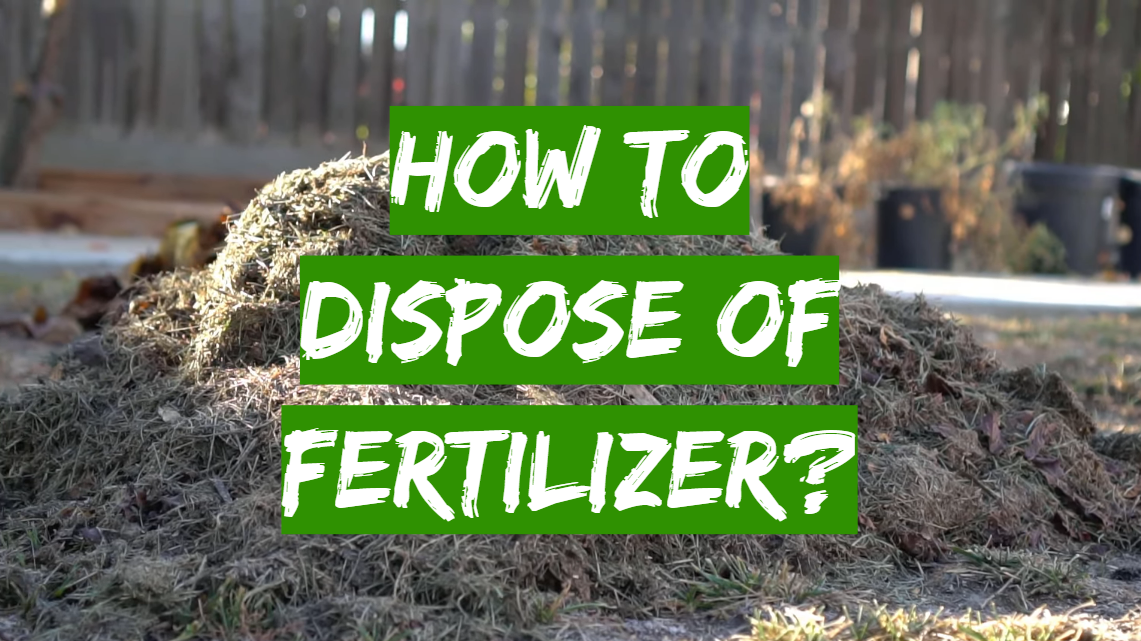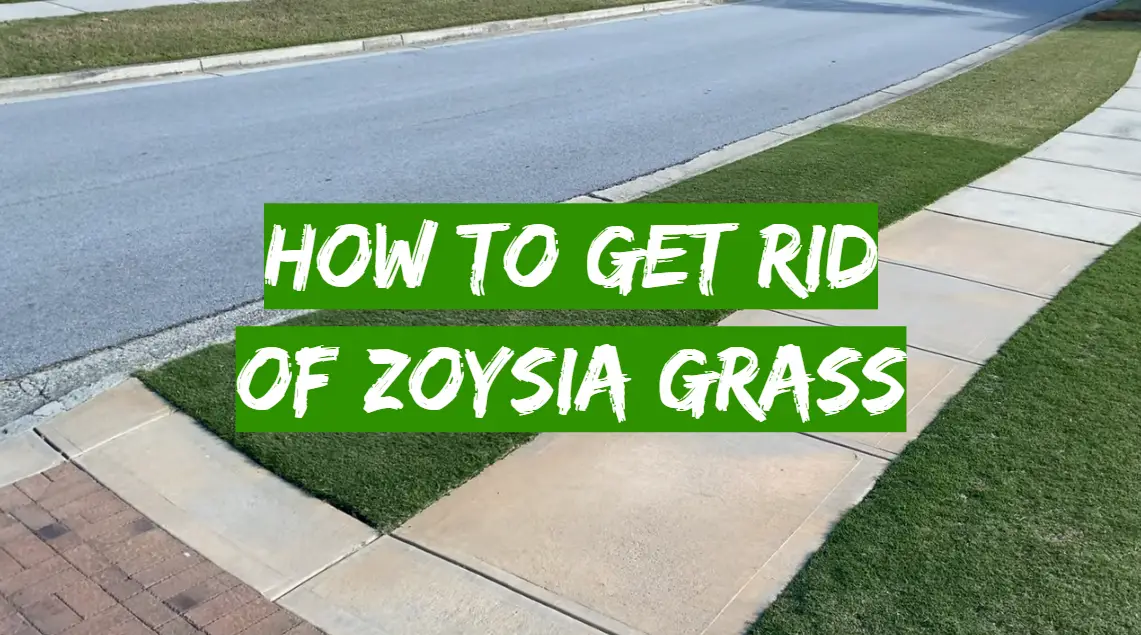Would you like to know how to dispose of your fertilizer that hasn’t been used? It depends on the level of danger posed by the fertilizer. You probably apply fertilizers frequently if you like showing off your lush, green lawn or gorgeous garden.
Table of Contents
Types of fertilizers
On the market nowadays, there is a variety of fertilizers to choose from:
- nitrogen, phosphorus, and potassium-containing chemical fertilizers;
- organic fertilizers including plant materials, animal waste, or minerals that increase nutrient availability in the soil;
- biosolids, which are sewage sludge that has been treated;
Organic fertilizers that are certified can be safely used on lawns/gardens and pose minimal harm to the environment. Chemical and bio-solid fertilizers are classified as hazardous waste and should never be thrown away or flushed since they may pollute local water supplies.
Phosphorus, a key component of synthetic fertilizers, promotes algae development, which depletes oxygen in lakes, rivers, and streams, destroying fish and other aquatic life.
Organic fertilizers are usually safe for the environment. Chemical and bio-solid fertilizers, on the other hand, are considered hazardous waste. Users should never dispose of them in the garbage or flush them down the drain. This kind of improper fertilizer disposal will pollute local water supplies. The reason for this is that these fertilizers include phosphorus, which promotes algal development.
The oxygen in rivers, lakes, and streams will be sucked away by algae. This harmful side effect has a negative impact on the fish and other aquatic animals that live in these bodies of water. When this happens, it may rapidly wreak havoc on your neighborhood’s ecology.
How to dispose of organic fertilizers?
Excess organic fertilizer may be easily disposed of by adding tiny amounts to your compost pile or distributing it thinly around your yard and garden. The natural components should break down rapidly, providing a boost of nutrients to all of your plants.
How to dispose of chemical fertilizers?
Chemical fertilizers don’t get quite the same amount of flak as pesticides, herbicides, and fungicides when it comes to environmental harm, but they should. Widespread chemical fertilizer usage in an urban setting has large-scale cumulative negative environmental consequences, such as leaching pollution of groundwater supplies and the development of algal blooms in surface water that exhaust the oxygen reserves needed by marine life.
Proper disposal, on the other hand, helps to minimize the chemical imprint you leave when you apply them. Fortunately, most towns offer designated hazardous household waste (a.k.a. HHW) pickup days, permanent HHW disposal sites, and planned collection events where you may drop them off.
This is how you should get rid of a chemical fertilizer:
- Place your leftover fertilizer in its original container outdoors for collection by your sanitation agency on hazardous waste pickup day;
- Bring your leftover fertilizer in its original packaging to an HHW facility or a local collection event. Some HHW facilities enable you to swap your old fertilizers and gardening chemicals for items left off by others;
- Give your unused fertilizer to another gardener in its original packaging with the label;
- Take your leftover fertilizer in its original packaging with the label to a garden center. Gardening shops have to dispose of leftover chemicals. They are obliged by required by municipal, state, and federal laws to take your fertilizer for recycling and disposal;
- Before putting away empty fertilizer containers, rinse them 3 times with water;
DO NOT:
- Dispose of it in a pile in your garden, or compost – it may inflict chemical burns on plants and kill important microorganisms;
- Flush liquid fertilizer down the drain or sink;
- Throw liquid or granular fertilizer straight into the garbage;
- Let children and pets play around with a fertilizer;
- Dump a large amount of “natural” fertilizer in one place is safe for plants;
- Mix various kinds of fertilizers since a hazardous chemical reaction may develop;
How to throw away old or expired fertilizer?
Although the chemicals in liquid fertilizers are beneficial to grass, they are classified as hazardous waste. Obviously, the garbage is not the ideal location to dispose of used fertilizer. Phosphorus, nitrogen and potassium are the primary components. If these chemicals get up in lakes or streams, they may be lethal to fish.
If you have no other choices, triple bag an old fertilizer in dense garbage bags. Seal each bag completely. Inform your garbage collection company that you have fertilizer in your garbage. This should be done only as a last option and in tiny quantities. Never throw fertilizer down a storm drain or a sink.
Here is what you require:
- A large zipped/plastic trash bag;
- Newspaper;
- Tape;
- Original fertilizer bags or containers;
Throw away old or expired fertilizers in such a way:
1) Gather old fertilizer
Gather all of the chemical or bio-solid fertilizer that you want to get rid of from your garden shed, basement, garage, or other storage places. Store fertilizer in the original container or bag to avoid mixing it with other items you are discarding. To begin using liquid fertilizer, make sure the lid is securely fastened. To prevent the top from unscrewing, wrap it with tape around the opening. When storing granular fertilizers in a plastic bag, wrap the bag down firmly and tape it shut. Pour the fertilizer into a Ziploc bag if it is loose in a box. Avoid handling the fertilizer, breathing fumes or particles from it, or allowing it to go into your eyes.
2) The newspaper is laid out
Lay down sheets of newspaper that are at least three thicknesses thick. Wrap each fertilizer bag or container separately within the layers, applying tape to hold them closed. Wrapping the fertilizer in the paper provides an extra layer of protection from spills. Use many sheets of paper to soak up any fluid that may leak from the container as it goes from your trash bin to the truck.
3) Each item has to be double sealed
Open a big enough plastic or Ziploc bag to fully seal around every newspaper-wrapped package or container of fertilizer. Place the fertilizer into the bag and secure it with a knot or zip the bag seal tight. To prevent fertilizer from leaking out, secure the bag’s seal with tape. If the plastic bag is flimsy, you may wish to add one more layer of newspaper around the entire unit before placing it all in another plastic bag to finish the process.
At this time, you may securely dispose of the fertilizer in a trash bin for normal collection. If there are any leaks, the bag and newspaper should capture the material so it does not escape and wash into rivers.
FAQ
Are fertilizers really hazardous?
Fertilizers are rich in potassium, nitrogen, and phosphorus. Herbicides and insecticides are also included in certain fertilizers. If these chemicals get up in lakes and streams, they may be hazardous to fish and animals. Never throw fertilizer down a storm drain or a sink. Examine the bag. The package of many fertilizers will provide disposal instructions. If you have unexplained packages of fertilizer, it’s generally prudent to presume they contain dangerous chemicals. It is preferable to use safe disposal methods.
How long does a lawn fertilizer need to dissolve?
Most synthetic fertilizers include a quick-release formula, which implies they dissolve nearly instantly and provide effects in a few days. Organic, slow-release fertilizers include extra nutrients for your grass, such as bone/fish meal, and fish emulsion. This may seem disgusting, but it is beneficial to your grass. It also requires longer breaking down, and effects may take 2-6 weeks.
How to find local fertilizer disposal?
Once or twice a year, many communities host trash/waste events. To locate one in your region, contact your local trash management agency. For additional information on appropriate disposal, call the National Environmental Hotline.
What can you do with leftover fertilizer?
There are a few options for disposing of leftover fertilizer. You can either spread it on your lawn or garden, mix it with compost, or simply throw it away. If you choose to spread it on your lawn or garden, make sure that you do so evenly and avoid any areas where there are sensitive plants. It’s also important to water the fertilizer well so that it doesn’t burn the plants. If you decide to mix it with compost, be sure to add plenty of other organic matter so that the fertilizer doesn’t overpower the compost. And finally, if you choose to throw it away, be sure to put it in a trash bag and seal it up tightly so that animals can’t get into it.
Is fertilizer a waste?
Fertilizer is not a waste product. It is a valuable resource that helps farmers and gardeners to grow crops and plants. However, it can be hazardous if it is not used correctly. Improperly disposed of fertilizer can pollute the environment and potentially harm human health. If you don’t use it properly, fertilizer can become a pollution problem.
Does fertilizer biodegrade?
Fertilizer is made up of nitrogen, phosphorus, and potassium – three elements that are essential for plant growth. But when you apply too much fertilizer, or the wrong kind, it can do more harm than good. Excess fertilizer can contaminate water supplies and create air pollution.
So what happens to all that extra fertilizer? Does it just sit in the ground and take up space? Or does it eventually break down and disappear?
The answer is: it depends. Nitrogen, phosphorus, and potassium are all minerals that occur naturally in the environment. They don’t break down easily, so most of the fertilizer you apply will stay in the soil for a long time.
Are there any dangers associated with improperly disposing of fertilizer?
Improperly disposing of fertilizer can be extremely dangerous. Fertilizer contains nutrients that can pollute water sources and potentially contaminate drinking water. Nitrates and phosphates in particular can cause algae blooms, which can deplete oxygen levels in waterways and kill aquatic life. Improperly disposed fertilizer can also create dust clouds that can irritate the respiratory system and cause other health problems.
How can you tell if a fertilizer is safe to dispose of in your area?
Before you begin, it’s important to check with your local solid waste management agency to see if they have any specific regulations or guidelines in place. Many times, these agencies will have a list of approved products that can be disposed of safely. If there are no specific guidelines in place, you can usually dispose of fertilizer by following these general tips:
- Choose a disposal method that is appropriate for the type and amount of fertilizer you have.
- Avoid disposing of fertilizer in waterways or on frozen ground.
- Cover the fertilizer with soil or another material to prevent it from spreading.
- Check with your local solid waste management agency to see if they have any special disposal requirements.
What should you do if you accidentally spill fertilizer?
If you accidentally spill fertilizer, it is important to clean it up immediately. You should first try to absorb the fertilizer with a paper towel or other absorbent material. Once the majority of the fertilizer has been absorbed, you can flush the area with water to remove any remaining residue. If the spill is on a hard surface, you may need to scrub it with a brush to remove all of the fertilizer.
Can you dry out wet fertilizer?
If your fertilizer is clumped together or caked on the bottom of the bag, it’s probably too wet to use. However, you can dry it out so that it’s usable again. All you need is some time and a warm, dry place.
To dry out wet fertilizer, start by breaking up the clumps with your hands or a garden tool. Then, spread the fertilizer out in a single layer on a tarp or other surface that will allow air to circulate around it. Finally, leave the fertilizer to dry for at least 24 hours before using it or storing it again.
Is fertilizer considered hazardous material?
While fertilizers are not traditionally thought of as hazardous materials, they can be because they contain nutrients that can be harmful to the environment if not used or disposed of properly. There are three main types of fertilizer: inorganic, organic, and slow-release. Inorganic fertilizers are made from synthetic materials and usually contain high levels of nitrogen and phosphorus. Organic fertilizers are made from natural materials such as manure, compost, and bone meal. Slow-release fertilizers are a mix of inorganic and organic materials that release nutrients slowly over time.
How do you dispose of inorganic fertilizers?
Inorganic fertilizers can be disposed of in a number of ways, depending on their composition. Most inorganic fertilizers can be safely added to landfill sites, but it is always best to check with your local authority first. Some inorganic fertilizers, such as those containing ammonia or phosphates, may need to be treated before they can be disposed of.
How long does it take granular fertilizer to break down?
It can take granular fertilizer up to two years to completely break down in soil. If you are looking to dispose of it sooner, one option is to dig a hole and bury the granules a few inches below the surface. Another is to mix the granules with water and pour the mixture onto a patch of grass or other vegetation. The granules will eventually sink into the soil and decompose.
Related Reviews:
- Best Lawn Fertilizers
- Best Fall Lawn Fertilizers
- Best Fertilizers for Bermuda Grass
- Best Fertilizers for Zoysia Grass
Final thoughts
When you have excess fertilizer leftover from your gardening efforts, attempt to utilize it yourself or donate it to someone whose vegetation might benefit from it. Fertilizer should only be thrown away as the last option. Now you know how to dispose of fertilizer safely and without causing damage to the environment if the need arises. Being a conscious gardener includes doing all possible to preserve our rivers clean.






